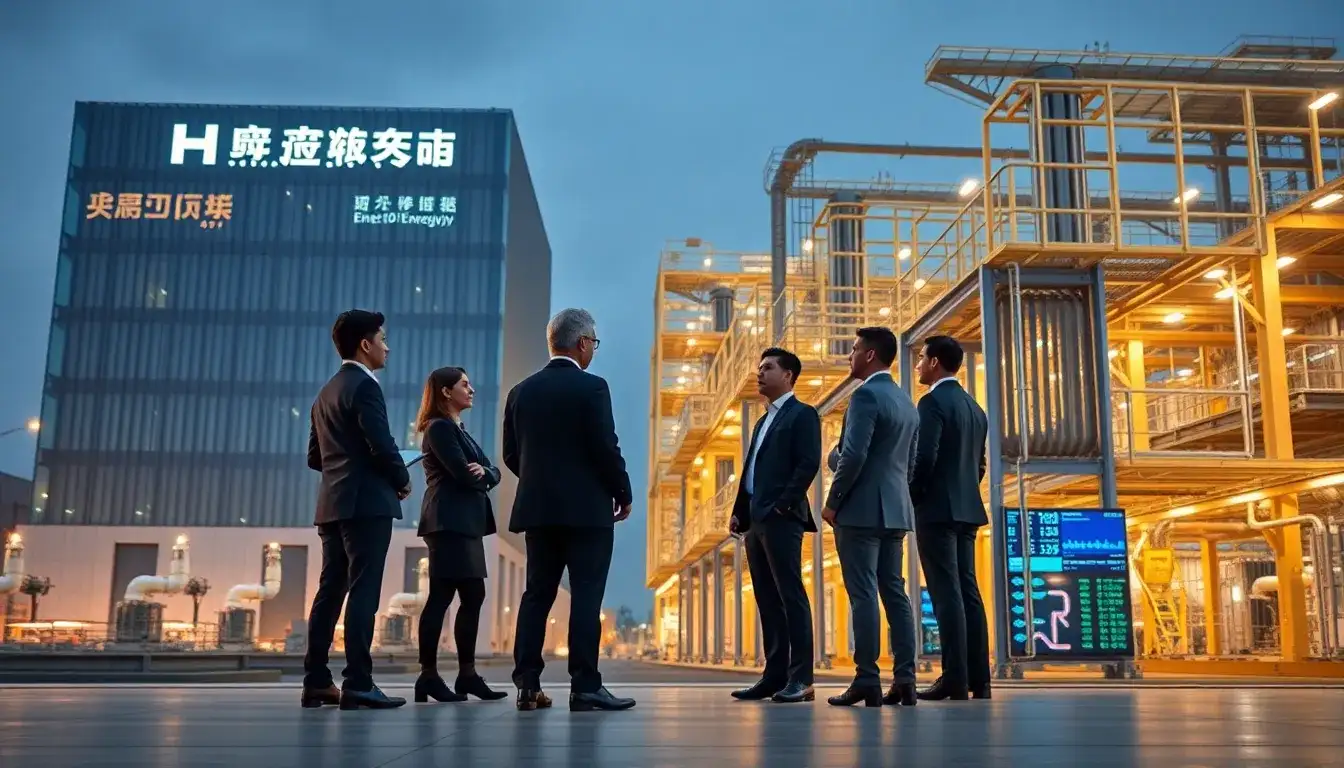
Exclusive from Xinliu: The Haicheng commercial and industrial energy storage team has streamlined its operations and downgraded its priorities, focusing on performance improvement for large-scale storage ahead of its IPO.
According to insiders, Haicheng Energy Storage has recently reassigned some personnel from its commercial and industrial energy storage team to the large-scale storage department, reflecting a strategic shift within the company. This decision highlights not only the company’s internal adjustments but also indicates a significant turning point in the energy storage industry, which is evolving from rapid growth to deeper segmentation.
The company faces challenges such as insufficient market economics, a need for resource concentration before its IPO, and an accelerating competitive landscape. Once a rising star in the energy storage sector, Haicheng’s commercial and industrial storage priorities have diminished as the company intensifies its focus on large-scale storage amid various pressures.
In December 2023, Haicheng Energy Storage launched its “Haina Baichuan” commercial and industrial energy storage service plan, introducing a model of “full insurance coverage + low-threshold power leasing,” along with its smart energy storage platform, Andustries. This platform was designed to strengthen the backend of its operations and tap into the commercial and industrial storage market. However, the decline in priority for this sector is primarily due to the company’s struggles with low profit margins.
Based on the company prospectus, Haicheng’s revenues for the years 2022 to 2024 are projected to be ¥3.615 billion, ¥10.202 billion, and ¥12.917 billion respectively, with net profits of ¥-1.777 billion, ¥-1.975 billion, and ¥288 million. This indicates that the company’s profitability remains under pressure.
Within commercial and industrial energy storage, the core logic is to leverage price differences between peak and off-peak electricity. However, uncertainties arising from policy adjustments in time-of-use pricing and fluctuations in user demand have made it difficult for companies in this sector to maintain stable earnings. The Jiangsu Energy Storage Industry Association pointed out in 2023 that commercial and industrial storage faces structural challenges, including rising non-technical costs and weak profit models.
Moreover, the commercial and industrial scenes require higher modularization and intelligence, whereas Haicheng’s technological framework is more aligned with centralized large-scale storage. There remains a gap in key indicators such as virtual power plant integration and flexible dispatch compared to leading manufacturers. Additionally, the fragmented nature of commercial and industrial energy storage shipments limits significant contributions to Haicheng’s performance in the short term, leading to inadequate returns on investment.
Notably, Haicheng had planned for an IPO on the A-share market in 2023. However, with a shift towards the Hong Kong stock market, the company must now confront profitability pressures during its IPO process. In terms of capacity expansion, Haicheng previously aimed to achieve an annual production capacity exceeding 100 GWh by 2024, reaching a target of 135 GWh by 2025. With 2024 already passing, the realization of these capacity goals remains uncertain, with significant concerns about the subsequent absorption of large capacities.
In summary, Haicheng’s strategic contraction is not an isolated incident, but rather a response to multiple crises, reflecting an overall shift in the energy storage industry. On one hand, companies like CATL and BYD are establishing an oligopoly in the domestic energy storage market, leveraging their advantages in battery technology and supply chains. On the other hand, second-tier companies are embroiled in price wars. According to data from Gaogong Industry Research, by the second half of 2024, the prices of commercial and industrial energy storage systems are expected to drop to ¥1.2-¥1.6 per Wh, with manufacturers’ profit margins becoming extremely thin. In this context, competition in commercial and industrial energy storage has intensified. For instance, Xinneng An, based in Xiamen alongside Haicheng, has already recruited star industry manager Ma Jinpeng to leverage its energy storage cell advantages to penetrate the commercial and industrial energy storage market. With backing from both ATL and CATL, as well as excellent performance in other lithium battery applications like drones, power tools, home storage, and two-wheeled vehicles, Xinneng An is poised to possess formidable competitive strength in the future commercial and industrial energy storage market.
Additionally, the commercial and industrial storage route is ushering in a technological battle, with long-duration energy storage emerging as a new battleground. In 2023, Haicheng introduced its kilowatt-hour level MIC batteries, aiming to escape homogeneous competition through technological innovation. However, this technology is still in the validation stage and has not yet yielded effective mass production results, placing a heavy financial burden on the company due to substantial R&D investments. At this juncture, large-scale storage, which can achieve economies of scale and lower product costs, is likely to become a preferred focus for Haicheng.
Haicheng is concentrating resources at production bases in Chongqing and Heze to manufacture large-scale storage products, effectively enhancing capacity utilization rates, further lowering marginal costs, and improving profit margins. Moreover, cash flow from large-scale projects is more stable, with longer order cycles helping to optimize the company’s financial structure. Although price wars in large-scale storage projects remain fierce, securing long-term revenue through large-scale orders can alleviate the profitability pressures faced by the company ahead of its IPO.
Haicheng’s strategic pivot indicates two primary directions: scaling up the large-scale storage market and establishing competitive barriers through long-duration energy storage technology. However, amid a crowded competitive landscape, both paths appear challenging. As the industry transitions from policy-driven growth to market-based competition, a company’s survival increasingly depends on its capabilities in technological iteration, cost control, and ecosystem integration rather than merely on capital investment in capacity. For Haicheng, shifting focus from commercial and industrial to large-scale storage may just be the first domino to fall. Establishing a true competitive moat in the energy storage arena will be crucial for navigating through future cycles.







